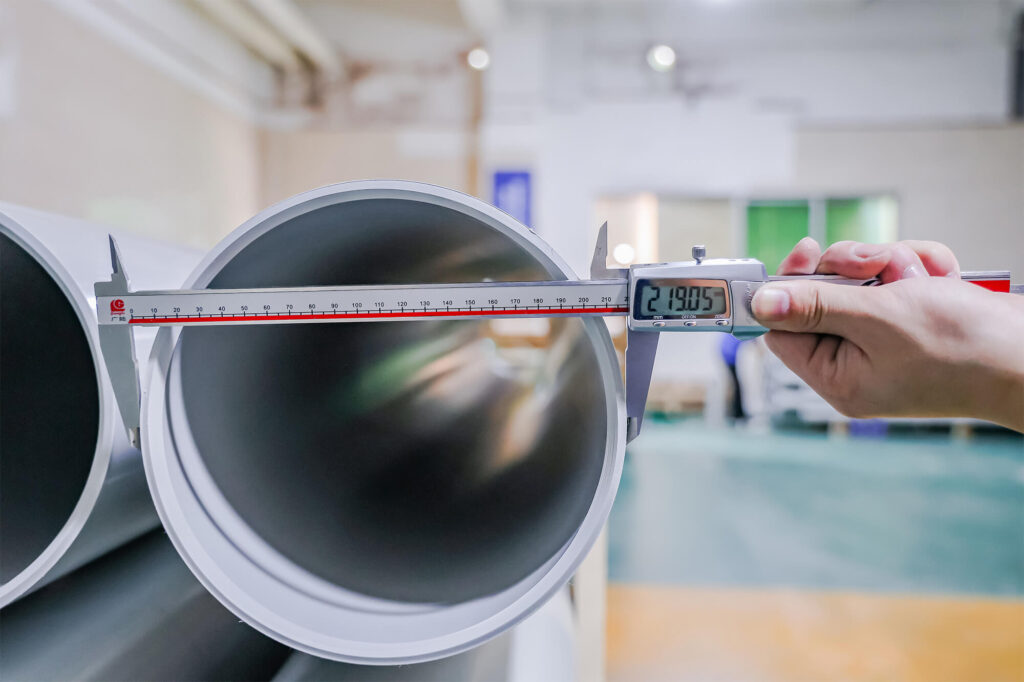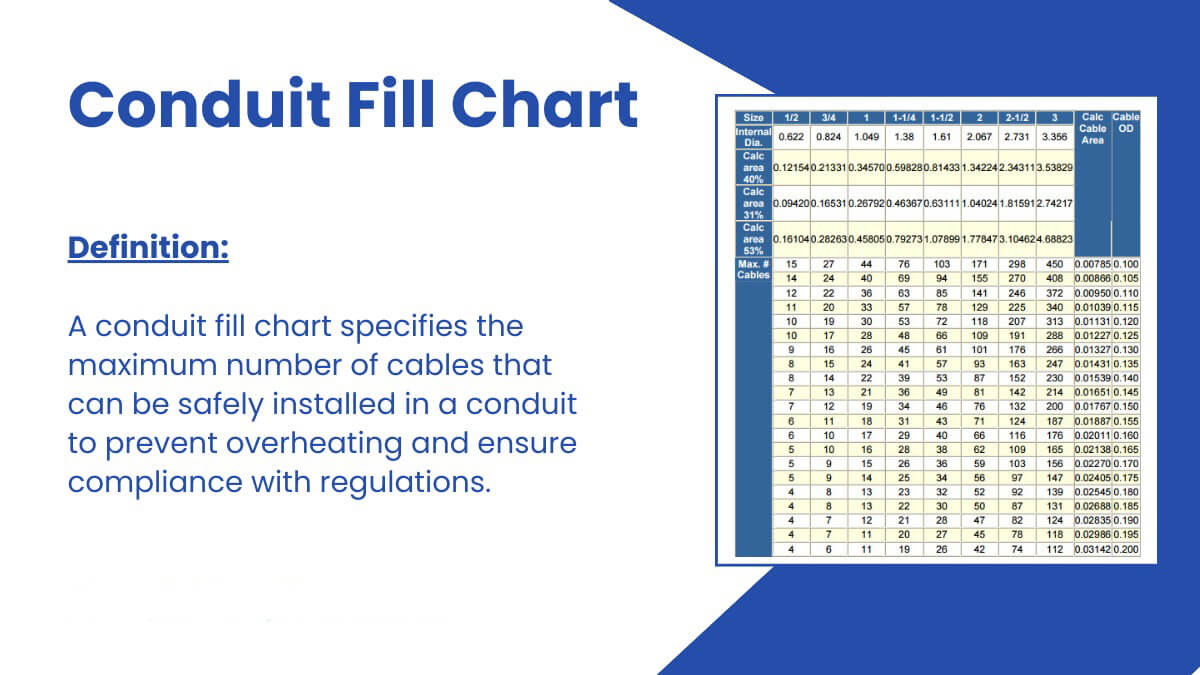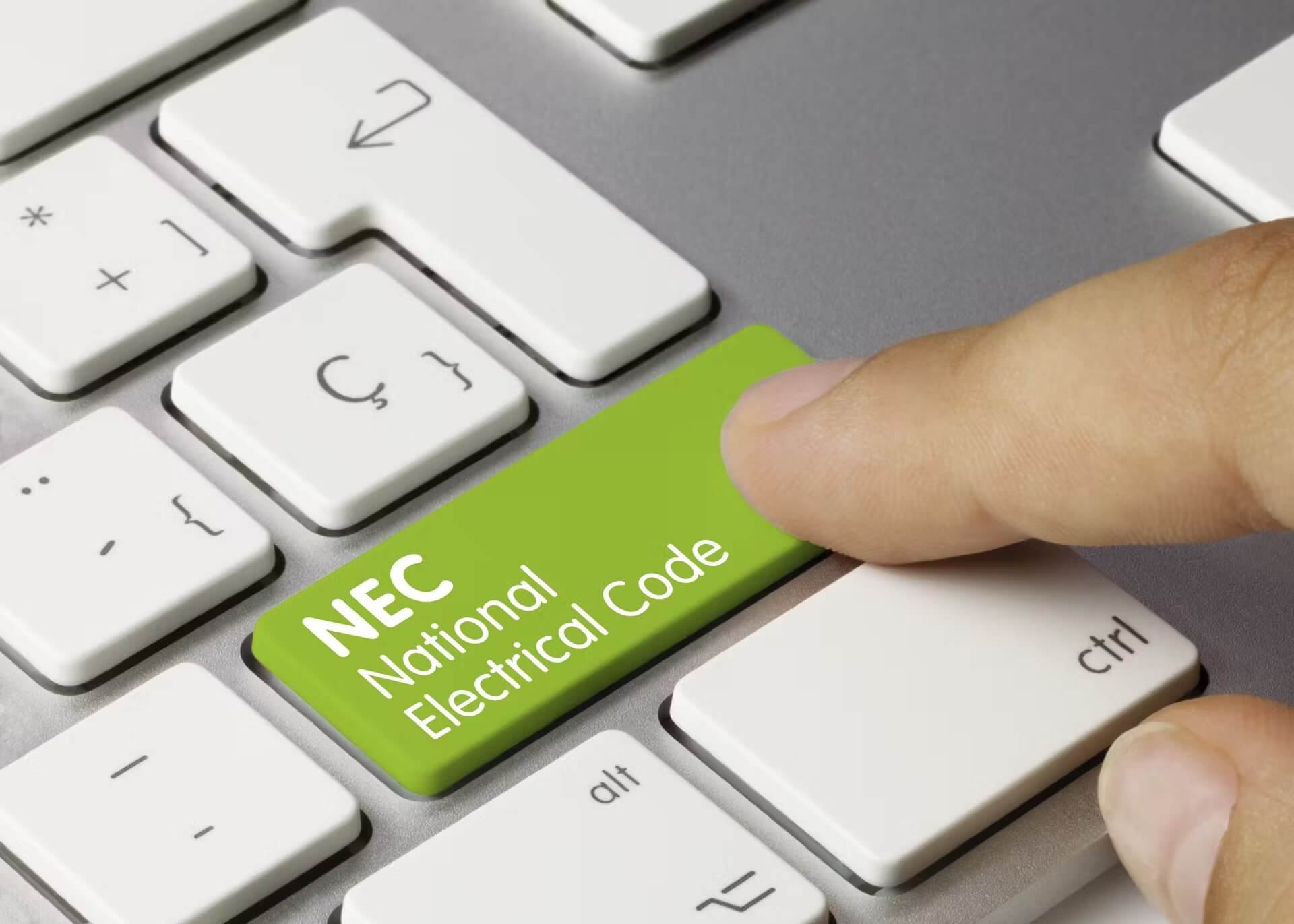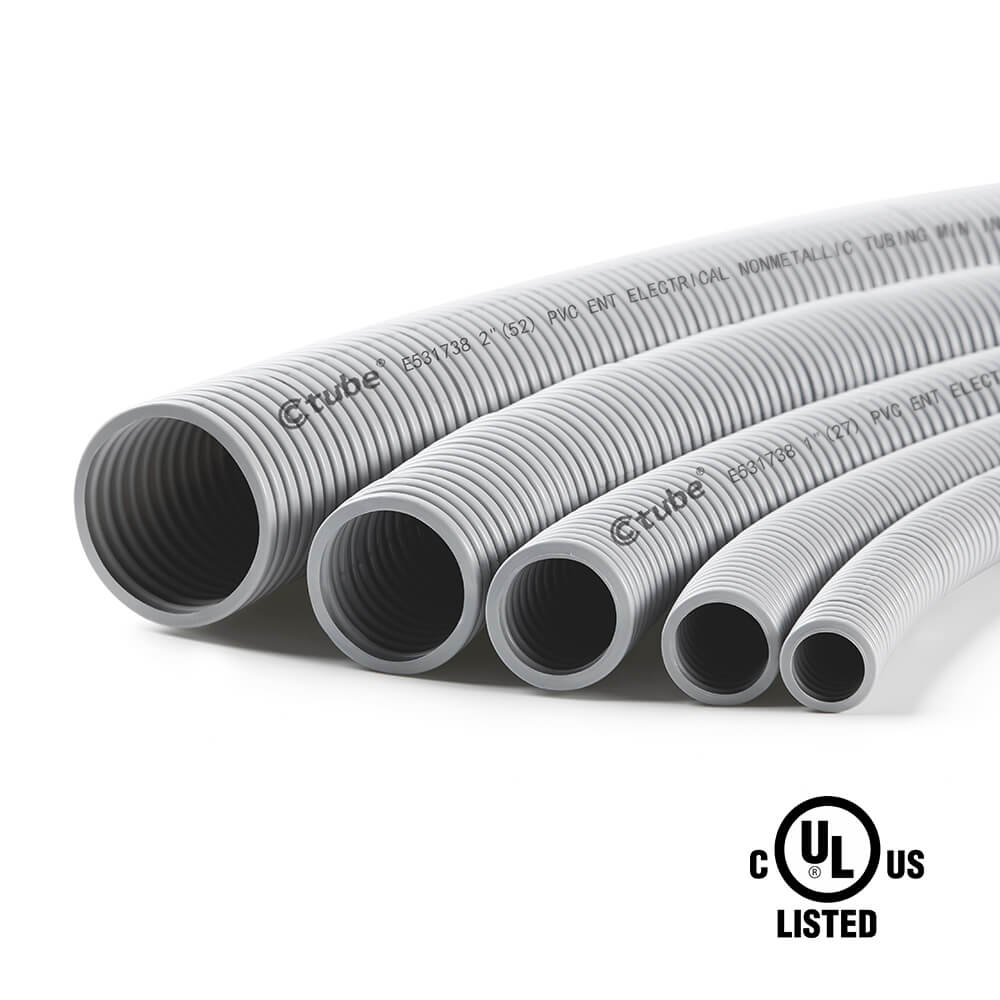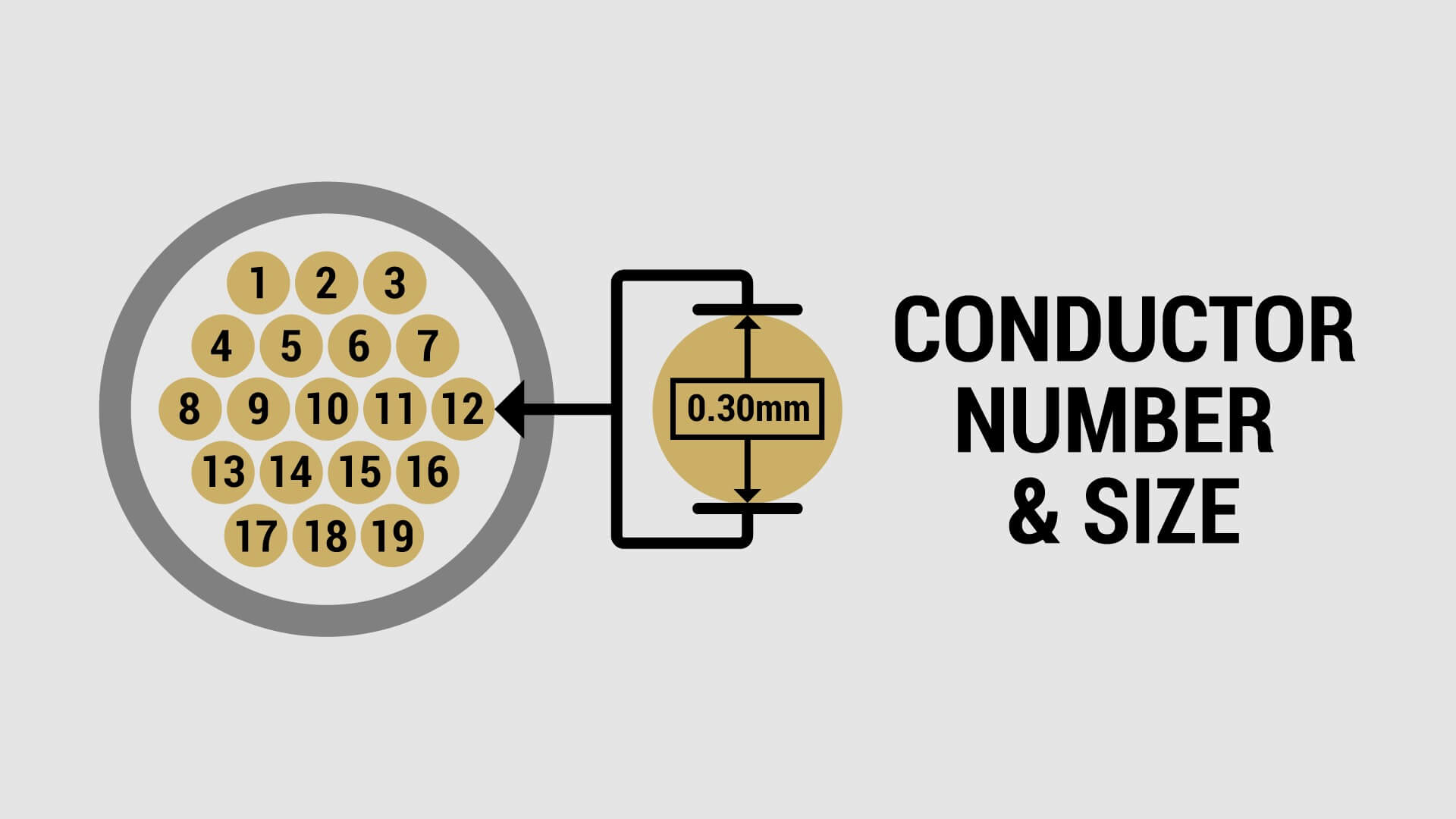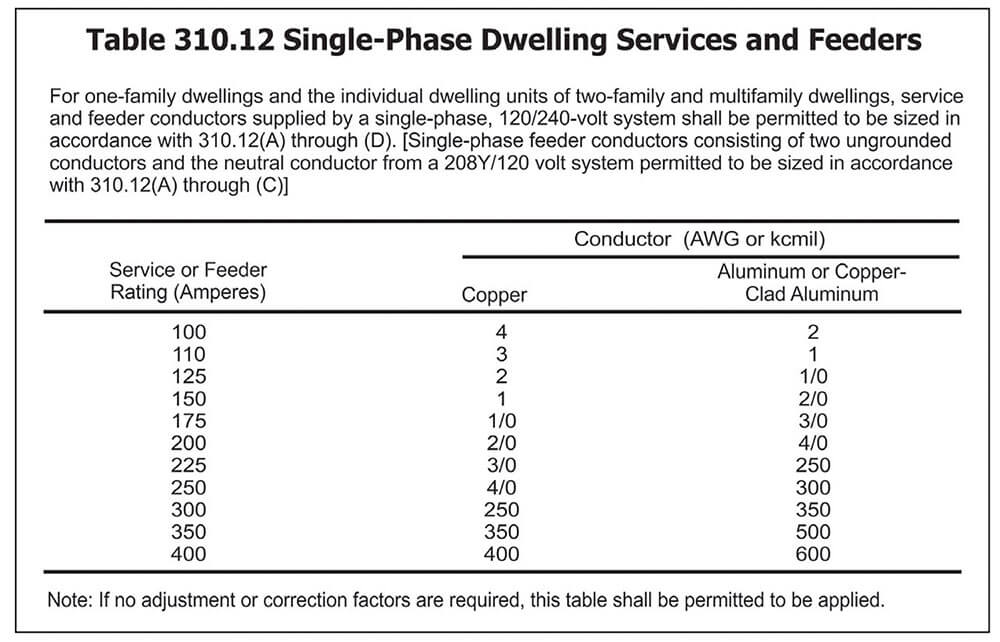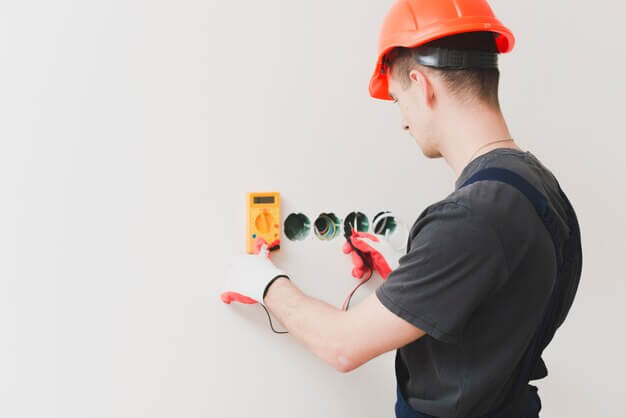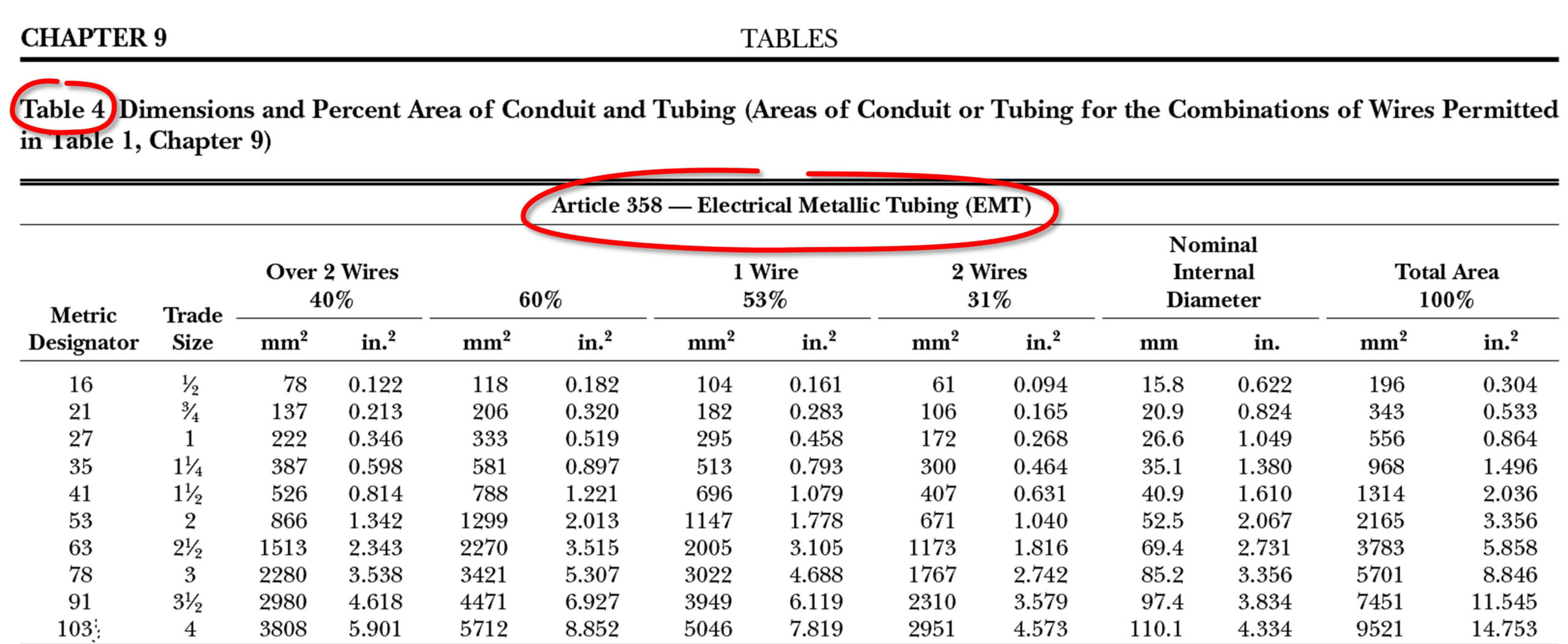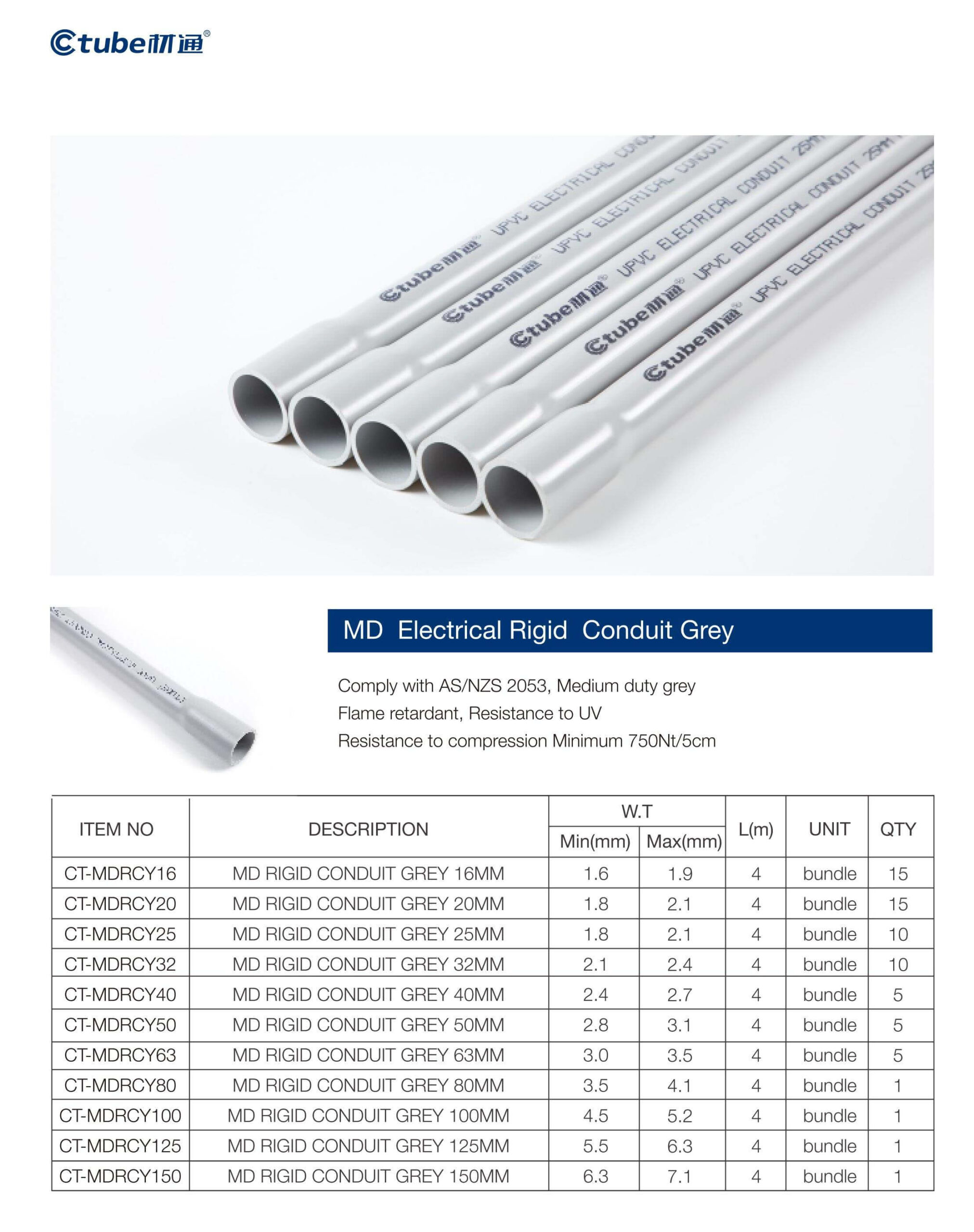Everything You Need To Know About Electrical Conduit Size
1.导言
Electrical conduits are essential components in modern electrical systems, serving as protective tubing for electrical wiring. They safeguard wires from physical damage, moisture, and chemical exposure while also facilitating organized and safe routing of electrical circuits. Electrical conduits come in various materials, such as metal, plastic, and flexible options, each suited to different environments and applications. Whether used in residential, commercial, or industrial settings, conduits play a crucial role in maintaining the integrity and safety of electrical installations.
Selecting the right conduit size is paramount for ensuring the safety and efficiency of an electrical system. An appropriately sized conduit provides ample space for wires, preventing overheating and allowing for easy maintenance and future upgrades. Conversely, an undersized conduit can lead to excessive heat buildup, increased electrical resistance, and potential fire hazards. Moreover, adhering to conduit sizing regulations is vital for compliance with building codes and standards, which are designed to protect both property and human lives. Proper conduit sizing also facilitates smoother installations and reduces labor and material costs.
This article delves into the critical aspects of electrical conduit sizing, providing a comprehensive guide for both professionals and DIY enthusiasts. We will explore the fundamental concepts of conduit size, examine the different types of conduits and their respective size ranges, and discuss the various factors influencing conduit size selection. Additionally, we will outline standard conduit sizes and their applications, provide detailed methods for sizing calculations, and highlight common mistakes to avoid. Advanced considerations, such as specialized conduit types and comparison of sizing standards, will also be covered.
2. Understanding Electrical Conduit Sizes
Electrical conduit sizing is a crucial aspect of electrical installations, influencing the safety, efficiency, and compliance of electrical systems. This section delves into the definition of conduit size, the common units of measurement used, and the critical importance of accurate measurement in electrical installations.
2.1 Definition of Conduit Size
The size of an electrical conduit is defined by its internal diameter (ID), which determines the amount of space available for housing electrical wires. The conduit size is crucial because it must accommodate the required number and size of conductors while allowing for safe operation and future maintenance. The internal diameter is the most critical dimension because it directly impacts the capacity and airflow within the conduit, affecting the thermal performance and ease of wire installation.
Conduit size also includes the external diameter (OD), which is important for fitting the conduit into junction boxes, panels, and other fixtures. However, the internal diameter remains the primary focus when discussing conduit size, as it directly relates to the cable fill capacity – the maximum number of conductors that can be safely installed within the conduit without exceeding permissible limits.
An additional consideration in conduit sizing is the wall thickness, which is especially relevant for Polyvinyl Chloride (PVC) conduit. The wall thickness impacts the conduit’s durability, resistance to physical damage, and ability to protect the enclosed wires. For example, Schedule 40 and Schedule 80 PVC conduits have different wall thicknesses, with Schedule 80 having a thicker wall, providing greater strength and protection, particularly in areas prone to physical impact or where higher mechanical strength is required.
Nominal Pipe Size (NPS) is a North American set of standard sizes for pipes used for high or low pressures and temperatures. “Nominal” refers to pipe in non-specific terms and identifies the diameter of the hole with a non-dimensional number (for example, 2-inch nominal steel pipe” consists of many varieties of steel pipe with the only criterion being a 2.375-inch (60.3 mm) outside diameter). Specific pipe is identified by pipe diameter and another non-dimensional number for wall thickness referred to as the Schedule (Sched. or Sch., for example, 2-inch diameter pipe, Schedule 40″).
Different types of conduits, such as Rigid Metal Conduit (RMC), Electrical Metallic Tubing (EMT), and PVC conduit, have specific size designations and standards that dictate their dimensions, including wall thickness. These standards ensure compatibility and safety across different installations and applications.
2.2 Common Units of Measurement (Inches, Millimeters)
Conduit sizes are commonly measured in either inches or millimeters, depending on the region and the specific industry standards in place. The choice of measurement unit often aligns with the broader electrical and construction standards of a given country or region.
In the United States and many other countries that follow the National Electrical Code (NEC), conduit sizes are typically expressed in inches. The NEC provides detailed guidelines for conduit sizing, specifying the internal diameter, wall thickness, and allowable cable fill for each conduit type. Common sizes range from as small as 1/2 inch to as large as 6 inches, with each size serving different applications based on the required electrical load and the number of conductors.
In contrast, many European countries and others that adhere to International Electrotechnical Commission (IEC) standards use the metric system, measuring conduit sizes in millimeters. For example, common metric conduit sizes might include 16 mm, 20 mm, 25 mm, and larger, with each size corresponding to specific applications and installation requirements.
Understanding the conversion between these units is essential for professionals working in global markets or with international clients. For instance, 1 inch is approximately equal to 25.4 millimeters. This knowledge ensures accurate specification and compatibility across different regions and standards.
2.3 Importance of Accurate Measurement in Electrical Installations
Accurate measurement of conduit size is critical for several reasons, all of which directly impact the safety, functionality, and compliance of electrical installations.
2.3.1 Ensuring Adequate Cable Fill Capacity
Properly sized conduits must accommodate the number and size of conductors without exceeding the allowable fill capacity. Overfilling a conduit can lead to increased electrical resistance, overheating, and potential fire hazards. Accurate measurement ensures that the conduit size matches the electrical load requirements and the physical space needed for safe cable installation.
For example, a conduit that is too small for the wires it houses can cause excessive heat buildup, which may damage the insulation and increase the risk of fire. By contrast, a conduit that is appropriately sized allows for adequate airflow and heat dissipation, ensuring safe and efficient operation.
2.3.2 Compliance with Electrical Codes and Standards
Electrical codes, such as the NEC, provide specific guidelines for conduit sizing based on the type of installation and the environmental conditions. Adhering to these standards is not only a legal requirement but also a best practice for ensuring safety and reliability. Accurate measurement and correct conduit sizing are essential for compliance with these codes, preventing potential violations and penalties.
For instance, the NEC stipulates the maximum number of conductors that can be installed in a given conduit size to prevent overheating and ensure ease of maintenance. Accurate measurement ensures compliance with these regulations, which are designed to protect both property and human lives.
2.3.3 Facilitating Easy Installation and Maintenance
Properly sized conduits simplify the installation process by providing adequate space for pulling and routing conductors. This reduces the risk of damage to the wires during installation and makes future maintenance and upgrades more manageable. Accurate measurement also ensures that fittings, connectors, and junction boxes match the conduit dimensions, promoting a seamless and efficient installation process.
For example, during a renovation or upgrade, having adequately sized conduits makes it easier to add new wiring or replace existing conductors without extensive rework. This not only saves time and labor costs but also minimizes disruption to the electrical system.
2.3.4 Optimizing System Performance
The correct conduit size helps maintain optimal system performance by minimizing electrical resistance and heat buildup. This is particularly important in high-power installations where efficient heat dissipation is crucial. Accurate measurement and appropriate conduit sizing contribute to the overall efficiency and longevity of the electrical system.
For example, in industrial settings with high electrical loads, using conduits that are too small can result in significant energy losses due to increased resistance. Properly sized conduits reduce these losses, improving the overall efficiency of the electrical system and reducing operational costs.
2.3.5 Accounting for Environmental Factors
Different installation environments, such as wet locations, corrosive areas, or high-temperature zones, may require specific conduit types and sizes. Accurate measurement ensures that the chosen conduit size and material are suitable for the environmental conditions, protecting the conductors from external damage and ensuring long-term reliability.
For instance, in environments with high moisture levels, such as underground or outdoor installations, selecting a conduit with the appropriate size and material (e.g., PVC for corrosion resistance) is essential to prevent water ingress and subsequent damage to the conductors.
3. Types of Electrical Conduits and Their Size Ranges
Electrical conduits come in various types, each designed for specific applications and environments. Understanding the different types of conduits and their size ranges is crucial for selecting the right conduit for a given electrical installation. This section provides detailed information on the common types of electrical conduits, their typical size ranges, and their applications.
3.1 Rigid Metal Conduit (RMC)
Typical Size Ranges:
– RMC is available in sizes ranging from 1/2 inch to 6 inches in diameter.
Uses:
– RMC is one of the heaviest and most durable types of conduits, often used in industrial and commercial settings where protection from physical damage is critical.
– It is suitable for both indoor and outdoor installations, including areas exposed to harsh environmental conditions.
– RMC can be used in exposed and concealed locations, providing excellent protection against physical damage and corrosion.
3.2 Intermediate Metal Conduit (IMC)
Typical Size Ranges:
– IMC is available in sizes from 1/2 inch to 4 inches in diameter.
Uses:
– IMC is lighter than RMC but still offers robust protection against physical damage.
– It is commonly used in commercial and industrial applications where a balance between strength and weight is needed.
– IMC is suitable for exposed and concealed installations and can be used in both indoor and outdoor environments.
3.3 Electrical Metallic Tubing (EMT)
Typical Size Ranges:
– EMT is available in sizes from 1/2 inch to 4 inches in diameter.
Uses:
– EMT is a thin-walled, lightweight conduit often used in residential, commercial, and light industrial applications.
– It is typically used for indoor installations where it is less likely to be subjected to physical damage.
– EMT is popular for its ease of installation and flexibility in routing, making it ideal for projects where quick and easy modifications are needed.
3.4 Flexible Metal Conduit (FMC)
Typical Size Ranges:
– FMC is available in sizes from 3/8 inch to 4 inches in diameter.
Uses:
– FMC, also known as “flex” or “Greenfield,” is used where flexibility is required, such as in areas with tight bends or where vibration and movement are present.
– It is often used in commercial and industrial applications, particularly for connecting equipment that requires movement or adjustment.
– FMC is suitable for indoor installations, providing a flexible solution for complex wiring routes.
3.5 Liquid-tight Flexible Metal Conduit (LFMC)
Typical Size Ranges:
– LFMC is available in sizes from 3/8 inch to 4 inches in diameter.
Uses:
– LFMC is designed for applications where both flexibility and moisture resistance are required.
– It is commonly used in outdoor installations, wet locations, and areas prone to water exposure, such as machine tool wiring and outdoor lighting.
– LFMC provides excellent protection against liquids, oils, and corrosive environments, making it suitable for a wide range of industrial and commercial applications.
3.6 Polyvinyl Chloride (PVC) Conduit
Typical Size Ranges:
– PVC conduit is available in sizes from 1/2 inch to 8 inches in diameter.
Uses:
– PVC conduit is widely used in residential, commercial, and industrial applications due to its durability, corrosion resistance, and cost-effectiveness.
– It is suitable for both above-ground and underground installations, including direct burial in concrete or earth.
– PVC conduit is often used in wet or corrosive environments where metal conduits would be unsuitable.
3.7 Electrical Non-metallic Tubing (ENT)
Typical Size Ranges:
– ENT is available in sizes from 1/2 – 2 1/2 inches in diameter.
Uses:
– ENT is a flexible, lightweight, and non-metallic conduit used primarily in residential and light commercial applications.
– It is easy to install, requiring minimal tools and fittings, making it ideal for new construction and renovation projects.
– ENT is suitable for indoor installations, including concealed locations within walls, floors, and ceilings.
4. Factors Influencing Conduit Size Selection
Selecting the correct conduit size for an electrical installation is a critical step in ensuring the safety, efficiency, and longevity of the electrical system. Several factors influence conduit size selection, each of which must be carefully considered to ensure compliance with regulatory standards and optimal performance.
4.1 Electrical Load and Conductor Size
One of the most significant factors influencing conduit size selection is the electrical load and the size of the conductors required to carry that load. The electrical load refers to the total amount of electrical power that will be transmitted through the conductors within the conduit. As the electrical load increases, larger conductors are needed to handle the current without overheating, which in turn requires a larger conduit size to accommodate these conductors.
– Ampacity: The ampacity of a conductor is the maximum amount of electric current it can carry without exceeding its temperature rating. Larger conductors with higher ampacity are needed for higher electrical loads, and these conductors require more space within the conduit.
– Number of Conductors: The total number of conductors that need to be housed within a conduit also affects the required conduit size. Each conductor occupies space, and sufficient space must be left for heat dissipation and ease of pulling wires through the conduit.
For example, a conduit that will house several large conductors for a high-power industrial application will need to be significantly larger than a conduit used for a low-power residential application with fewer and smaller conductors. Accurate calculations based on the electrical load and the required conductor sizes are essential for selecting the appropriate conduit size.
4.2 Type of Wiring System
The type of wiring system used in an electrical installation can also impact the choice of conduit size. Different wiring systems have specific requirements for conduit sizing based on the nature of the installation and the type of conductors used.
– Single Conductors: When single conductors are used, the conduit must be sized to allow for adequate space for each conductor, ensuring that the conduit fill percentage does not exceed the allowable limit.
– Cables: When cables (such as multi-conductor cables) are used, the conduit must be sized to accommodate the outer diameter of the cable and ensure that there is sufficient space for proper heat dissipation and ease of installation.
– Bundles of Cables: In installations where multiple cables are bundled together, the conduit size must be increased to account for the additional space required for the bundle and to prevent overheating due to the reduced ability to dissipate heat.
For instance, in a commercial building with extensive networking and communication systems, conduits may need to accommodate bundled data cables, requiring careful consideration of conduit size to prevent congestion and maintain system performance.
4.3 Environmental Conditions
Environmental conditions play a crucial role in conduit size selection. Factors such as temperature, humidity, and exposure to chemicals can affect the performance and durability of the conduit and its contents.
– Temperature: High temperatures can cause conductors to overheat, requiring larger conduit sizes to ensure adequate airflow and heat dissipation. Conversely, in cold environments, conduits must be able to withstand low temperatures without becoming brittle.
– Humidity and Moisture: In wet or humid environments, conduits must be sized to accommodate moisture-resistant or waterproof conductors. Larger conduits may be needed to prevent water ingress and ensure the longevity of the electrical system.
– Chemical Exposure: In industrial settings where conduits may be exposed to corrosive chemicals, selecting the appropriate material and size is essential to protect the conductors from chemical damage. Larger conduits may be necessary to allow for protective coatings or liners.
For example, in outdoor installations exposed to varying weather conditions, using conduits that can withstand extreme temperatures and moisture is crucial. The size of the conduit must be chosen to ensure that it can protect the conductors from environmental damage while maintaining system integrity.
4.4 Regulatory and Code Requirements
Regulatory and code requirements are critical factors in conduit size selection. Electrical codes, such as the National Electrical Code (NEC) in the United States, provide detailed guidelines for conduit sizing based on safety and performance standards.
Key Regulatory Considerations:- Conduit Fill Limits: Codes specify the maximum allowable fill percentage for conduits, ensuring that there is sufficient space for heat dissipation and ease of installation. Exceeding these limits can lead to overheating and increased fire risk.
– Spacing and Support Requirements: Codes also dictate the spacing and support requirements for conduits, which can impact the size and type of conduit used. Properly supported and spaced conduits are less likely to experience mechanical damage and stress.
– Material Specifications: Codes may specify the materials suitable for different environments and applications, influencing the choice of conduit size and type based on the specific installation requirements.
For instance, compliance with NEC requirements for conduit fill and support ensures that the installation is safe, reliable, and meets legal standards. Adhering to these regulations helps prevent potential hazards and ensures that the electrical system performs as intended.
4.5 Future Expansion and Maintenance Considerations
Planning for future expansion and maintenance is an important aspect of conduit size selection. Anticipating future needs can prevent costly and disruptive modifications to the electrical system.
– Future Capacity: Selecting a conduit size that allows for future expansion of the electrical system can save time and resources. Larger conduits provide additional space for new conductors, accommodating increased electrical loads without the need for extensive rework.
– Ease of Maintenance: Properly sized conduits facilitate easier maintenance and upgrades. Conductors can be pulled and replaced more easily, reducing downtime and labor costs.
– Flexibility: Conduits that are slightly oversized provide flexibility for changes in the wiring system, allowing for quick adaptations to new technologies and requirements.
For example, in commercial buildings where future upgrades to electrical and communication systems are likely, selecting conduit sizes that allow for additional conductors and cables can significantly reduce the complexity and cost of future modifications. This proactive approach ensures that the electrical system remains adaptable and resilient over time.
5.Sizing Calculations and Methods
Accurate sizing of electrical conduits is essential to ensure the safety and efficiency of electrical installations. This article will delve into the various methods of sizing conduits, the National Electrical Code (NEC) guidelines, detailed steps for sizing conduits, and practical examples to help readers understand the process.
5.1 Overview of Sizing Methods
Several methods are used to determine the appropriate size of electrical conduits. These methods consider factors such as the number and size of wires, the type of conduit material, and the installation environment. The primary methods include:
– Conduit Fill Calculation: This method involves calculating the total cross-sectional area of all conductors to ensure they do not exceed the maximum fill percentage allowed by the NEC.
– Voltage Drop Consideration: This method ensures that the conduit size is adequate to minimize voltage drop, which can affect the performance of electrical equipment.
– Derating Factors: This method accounts for factors such as ambient temperature and the number of current-carrying conductors, which can affect the conduit size.
5.2 National Electrical Code (NEC) Guidelines
The NEC provides comprehensive guidelines for sizing electrical conduits. These guidelines are crucial for ensuring safety and compliance with electrical codes. Key NEC considerations include:
– Conduit Fill Limits: The NEC specifies maximum fill limits for different types of conduits to prevent overheating and ensure easy wire pulling. For example, the fill limit is typically 40% for a conduit with more than two conductors.
– Ambient Temperature Adjustments: The NEC provides correction factors for conduits installed in environments with temperatures different from the standard reference temperature.
– Number of Conductors: The NEC has specific guidelines for derating the ampacity of conductors based on the number of current-carrying conductors in a conduit.
5.3 Detailed Steps for Sizing Conduits
To size a conduit correctly, follow these detailed steps:
1. Determine the Type of Conduit: Choose the appropriate conduit material (e.g., PVC, EMT, RMC) based on the installation environment and project requirements.
2. Identify the Number and Size of Conductors: List all the conductors that will be placed in the conduit, including their sizes (in AWG or kcmil).
3. Calculate the Total Cross-Sectional Area: Using NEC Chapter 9, Table 5, determine the cross-sectional area of each conductor. Sum these areas to find the total cross-sectional area of all conductors.
4. Apply Conduit Fill Limits: Refer to NEC Chapter 9, Table 1, to find the maximum allowable fill percentage for your conduit type. Ensure the total cross-sectional area of the conductors does not exceed this limit.
5. Consider Voltage Drop and Derating Factors: Use NEC Article 310 and Annex B to adjust for voltage drop and derating factors. Ensure the conduit size accounts for these adjustments.
6. Select the Conduit Size: Based on the total adjusted cross-sectional area, select the appropriate conduit size from NEC Chapter 9, Table 4.
5.4 Examples of Sizing Calculations
Example 1: Sizing Conduit for a Residential Lighting Circuit
Project: A residential lighting circuit requires three 12 AWG conductors (two current-carrying conductors and one ground).
Step-by-Step Calculation:
1. Type of Conduit: PVC conduit.
2. Number and Size of Conductors: Three 12 AWG conductors.
3. Cross-Sectional Area: From NEC Chapter 9, Table 5, the cross-sectional area of a 12 AWG conductor is 0.0133 square inches. For three conductors, the total area is 3 x 0.0133 = 0.0399 square inches.
4. Conduit Fill Limits: For more than two conductors, the maximum fill limit is 40% for PVC conduit. From NEC Chapter 9, Table 4, a 1/2 inch PVC conduit has a total cross-sectional area of 0.121 square inches. 40% of 0.121 is 0.0484 square inches.
5. Voltage Drop and Derating: Assume standard conditions with no significant voltage drop or derating factors.
6. Conduit Size: The total area of 0.0399 square inches is less than the 40% fill limit of 0.0484 square inches for a 1/2 inch PVC conduit. Therefore, a 1/2 inch PVC conduit is appropriate.
Example 2: Sizing Conduit for a Commercial Power Distribution Circuit
Project: A commercial power distribution circuit requires five 8 AWG conductors (four current-carrying conductors and one ground).
Step-by-Step Calculation:
1. Type of Conduit: EMT conduit.
2. Number and Size of Conductors: Five 8 AWG conductors.
3. Cross-Sectional Area: From NEC Chapter 9, Table 5, the cross-sectional area of an 8 AWG conductor is 0.0366 square inches. For five conductors, the total area is 5 x 0.0366 = 0.183 square inches.
4. Conduit Fill Limits: For more than two conductors, the maximum fill limit is 40% for EMT conduit. From NEC Chapter 9, Table 4, a 1 inch EMT conduit has a total cross-sectional area of 0.346 square inches. 40% of 0.346 is 0.1384 square inches.
5. Voltage Drop and Derating: Check for derating factors due to ambient temperature or number of conductors. Adjust the ampacity if necessary.
6. Conduit Size: The total area of 0.183 square inches exceeds the 40% fill limit of 0.1384 square inches for a 1 inch EMT conduit. Therefore, a larger conduit size is needed. A 1 1/4 inch EMT conduit has a total cross-sectional area of 0.598 square inches. 40% of 0.598 is 0.2392 square inches, which is sufficient. Therefore, a 1 1/4 inch EMT conduit is appropriate.
6. Tools and Resources for Measuring Conduit Sizes
Accurate measurement of conduit sizes is crucial for ensuring the proper fit and function of electrical systems. This article will cover the common tools used for measurement, tips for achieving accurate measurements, and the best online calculators and software available to assist in conduit sizing.
6.1 Common Tools Used for Measurement
Several tools are commonly used to measure conduit sizes accurately. These tools ensure that you select the correct conduit size for your project, minimizing errors and ensuring compliance with electrical codes.
6.1.1 Measuring Tape
A measuring tape is a basic yet essential tool for measuring conduit lengths and diameters. Ensure your measuring tape is durable and has clear markings for precise measurements.
– Usage: Measure the outer diameter and length of the conduit.
– Tip: Use a tape with both imperial and metric units for versatility.
6.1.2 Calipers
Calipers are precision instruments used to measure the inner and outer diameters of conduits accurately. They are available in digital, dial, and vernier versions.
– Usage: Measure the inner and outer diameters of the conduit with high precision.
– Tip: Use digital calipers for quick and accurate readings.
6.1.3 Conduit Benders
Conduit benders are specialized tools used to bend conduits to the desired angles. While not directly a measuring tool, they have markings that help measure the bend radius and angle.
– Usage: Bend conduits while ensuring the correct bend radius and angle.
– Tip: Practice using the bender to achieve precise bends without kinking the conduit.
6.1.4 Micrometers
Micrometers are used for highly precise measurements of conduit thickness and diameter. They provide measurements in small increments, making them ideal for detailed work.
– Usage: Measure the thickness and diameter of conduits with high precision.
– Tip: Use micrometers for critical measurements where high accuracy is required.
6.2 Online Calculators and Software
In addition to manual measurement tools, several online calculators and software can assist in determining conduit sizes. These resources simplify the process and provide quick, accurate results.
6.2.1 Online Conduit Fill Calculators
Online conduit fill calculators help you determine the appropriate conduit size based on the number and size of conductors. Simply input the conductor details, and the calculator provides the recommended conduit size.
– Example: The Southwire Conduit Fill Calculator allows users to input conductor sizes and quantities to determine the correct conduit size.
6.2.2 NEC Code Reference Tools
Several websites and apps provide easy access to NEC code references, helping you ensure compliance with fill limits, derating factors, and other regulations.
– Example: The Electrical Code Reference app provides quick access to NEC tables and guidelines.
6.2.3 Electrical Design Software
Electrical design software offers comprehensive tools for planning and designing electrical systems, including conduit sizing. These programs often include built-in calculators and code references.
– Example: Autodesk AutoCAD Electrical provides tools for designing electrical systems, including conduit routing and sizing.
6.2.4 Manufacturer Resources
Many conduit manufacturers offer online resources, including sizing charts, calculators, and installation guides. These resources are tailored to their products and provide specific guidance for selecting and installing conduits.
– Example: The Ctube website provides sizing charts and technical support for their range of PVC conduits.
7. Conclusion
Selecting the appropriate electrical conduit size is a critical aspect of designing and installing safe, efficient, and compliant electrical systems. By understanding the various types of conduits, their typical sizes, and the factors that impact size selection, professionals can make informed decisions that ensure the safety and efficiency of electrical installations. Accurate measurement and proper selection of conduit sizes, coupled with adherence to electrical codes and best practices, are essential for achieving successful and reliable electrical systems.
Ctube is a PVC conduit and fittings manufacturer in China, specializing in innovative solutions for cable management and protection. Our product range includes UL listed PVC conduit pipes, solar conduit & fittings, halogen-free options, and products meeting AS/NZS 2053 standards. We hold certifications from UL, CSA, CE, ROHS, and IEC.
We offer customized sizes, colors, inner diameters, outer diameters, and wall thicknesses to meet the specific requirements of various projects, all in compliance with relevant standards. Choose Ctube for high-quality products and efficient service.
Everything You Need To Know About Electrical Conduit Size 阅读更多 "

